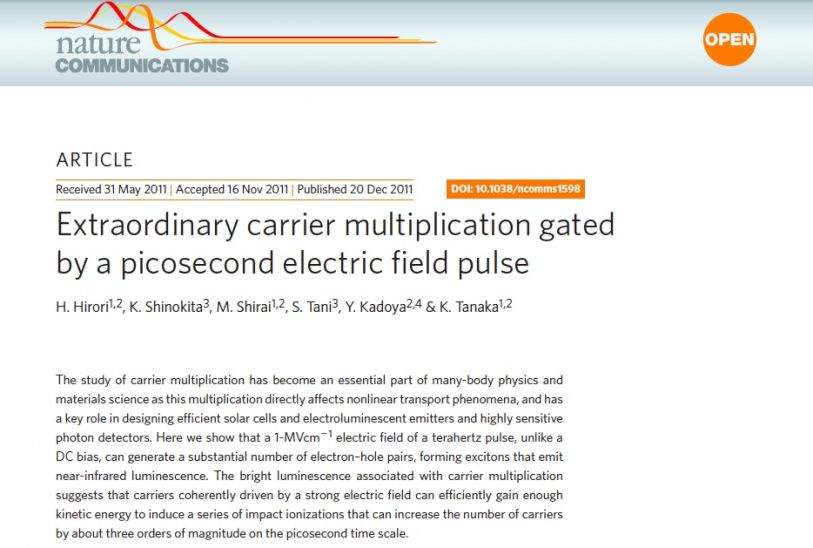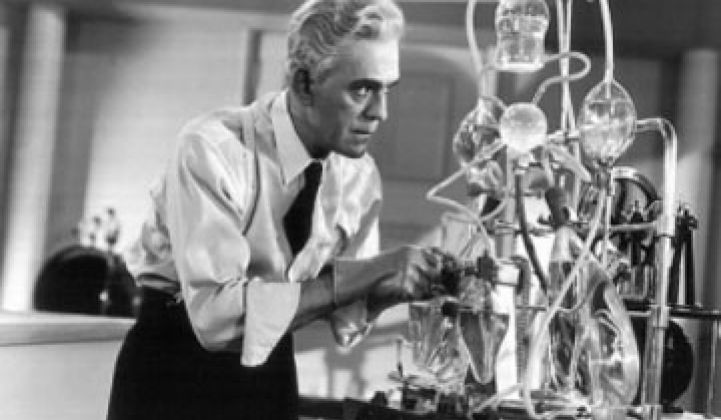The theoretical maximum solar conversion efficiency (also called the Shockley-Queisser limit) is 33.7 percent. That assumes a single p-n junction with a 1.34 eV bandgap -- and that any extra energy in the photons is lost.
Ultrasolar doesn't make that assumption and aims to recover that lost energy -- by using the pyroelectric effect.
The startup's pyroelectric device creates a strong pulsing electric field that is applied to the solar panel. According to the firm, this oscillating field separates more electrons from holes (increases current), increases the mobility of electrons and holes (increases current), and changes bandgap -- resulting in the solar cell absorbing more light.
Pyroelectricity converts heat to electric field. It's not to be confused with thermoelectricity, piezoelectricity, the Seebeck effect or the Peltier effect -- other cool thermal or crystal phenomena.
The pyroelectric effect draws "hot electrons" to the solar cell's electrodes and allows Ultrasolar to extract a claimed 20 percent more power from a solar module. "Hot electrons" would normally lose their energy in the crystal structure of the cell. The entire hot-carrier pursuit aims to catch those electrons before they lose their energy in the form of heat. Research efforts at Stanford, the University of New South Wales, and in Japan are using quantum wells to reach these hot carriers.
According to Britney Spears, "Hot electrons occur when a strong electric field is applied across a semiconductor. The electrons obtain energy from the applied electric field, which they dissipate by emitting phonons, exciting other electrons or emitting photons. When an electron's energy exceeds the average thermal energy of the semiconductor, the increase in kinetic energy of the electrons is statistically interpreted as a raising of the electrons' temperature, so they are termed 'hot electrons.'"
Ultrasolar deposits a ceramic Perovskite material on a glass substrate to produce a gigahertz-speed oscillator for high electric fields. The device is roughly the size of a microinverter, said CEO Santosh Kumar during an interview last week in San Francisco.
The CEO of this 14-employee startup sees the unit as "another balance-of-systems component easily installed in new or existing installations" that is connected to up to eight modules between the modules and the inverter. The CEO and VP of sales Darryl Parker also envision the unit potentially being integrated into the PV inverter itself.
A potential gain of 20 percent to 30 percent in power production is serious business. It would improve the yield of the power plant, the return for investors, and use less land for the same given output. VP Parker saw the price of an inverter incorporating the Ultrasolar booster going up 5 percent, while the system price-per-watt could drop 20 percent.
Ultrasolar has completed UL testing and its devices are being tested by a few major solar panel manufacturers.
The startup will have to prove to solar module manufacturers that gigahertz oscillation doesn't degrade module performance. And Ultrasolar will also have to prove to inverter manufacturers, module manufacturers, solar developers and bankers that the device is robust and bankable.
Still, it's a beautiful example of materials and device science and aggressive venture investing going after new disruptive technologies. It's early days for Ultrasolar, but it's heartening to see entrepreneurs and investors pushing the envelope.
The firm has raised less than $10 million since its founding from investors Bessemer, Jafco, Veddis and angel investors including Rob Soni.




